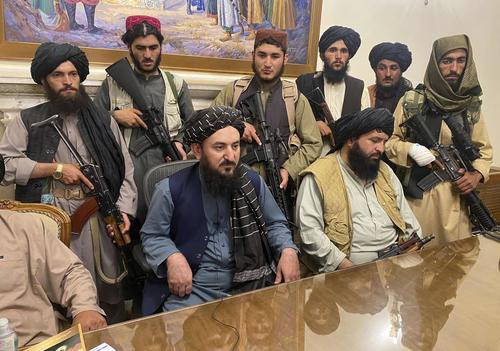The decision was made by Treasury Secretary Janet Yellen and officials in Treasury’s Office of Foreign Assets Control, the people said. The State Department was also involved in discussions this weekend, with officials in the White House monitoring the developments. An administration official said in a statement, “Any Central Bank assets the Afghan government have in the United States will not be made available to the Taliban.” The officials spoke on the condition of anonymity to discuss government policy not yet made public.
As of April, the Afghan central bank held $9.4 billion reserve assets according to the International Monetary Fund – roughly one third of the country’s annual economic output. The vast majority are held outside of the country, according to the Post, billions of which are in the United States.
According to the report, the freeze took effect on Sunday. As the situation was rapidly deteriorating over the weekend, Afghani Central Bank governor Ajmal Ahmady tweeted that they were told they wouldn’t receive any more dollar shipments.
6/Friday – we received a call that given the deteriorating environment, we wouldn’t get any more dollar shipments.
People spread rumors that I had fled on Friday.
On Saturday, DAB had to supply less currency to the markets on Saturday, which further increased panic.
— Ajmal Ahmady (@aahmady) August 16, 2021
As the Post notes, Afghanistan is already one of the poorest countries in the world, and has been highly dependent on US assistance. What’s more, the Biden administration will also likely face difficult decisions over how to manage existing sanctions on the Taliban – while dealing with trying to deliver humanitarian aid to a population in dire need.
According to Adam M. Smith, who served on the National Security Council and as senior adviser to the director of the Department of Treasury’s Office of Foreign Assets Control during the Obama administration, the Biden administration didn’t need any new authority to freeze the reserves because the Taliban is already sanctioned under an executive order approved following the Sept. 11, 2001 attacks.
Meanwhile, the US sends roughly $3 billion per year in support for the Afghan military, which can only be sent if the Secretary of Defense “certifies to Congress that the Afghan forces are controlled by a civilian, representative government that is committed to protecting human rights and women’s right.”
This funding is expected to stop flowing as well, along with smaller pots of money, such as $20 million for recruiting women to the Afghan National Security Forces. About 80 percent of Afghanistan’s budget is funded by the U.S. and other international donors, John Sopko, the special inspector general for Afghanistan reconstruction, told Reuters this spring. A spokesman for the White House Office of Management and Budget declined to comment on the status of Congressionally-approved funding for Afghanistan.
“Of course, it’s dangerous,” said Ian Bremmer, president and founder of Eurasia Group, a consulting firm, about restrictions on the Afghan economy, including the freezing of funds held in the U.S. “You’ll see a lot more refugees on the back of this, a lot more radicalism on the back of this. But, on the other hand, Afghanistan will not be able to control this country for a very long period of time. I can’t see us spending money on the Taliban.” -WaPo
According to the UN Special Inspector General for Afghanistan Reconstruction, half of the country’s total population has required humanitarian assistance this year, nearly double that from 2020, and a six-fold increase from four years ago.
According to #UnitedNations, number of #Afghans requiring humanitarian assistance in 2021 reached approx. half of #Afghanistan’s total estimated population. This figure nearly double that of 2020 & six-fold increase compared to four years agohttps://t.co/0KwzIwaTfZ
— SIGAR (@SIGARHQ) August 16, 2021
Maybe China will kick in a few billion bucks to their new besties?
Related posts:
Views: 0
 RSS Feed
RSS Feed

















 August 17th, 2021
August 17th, 2021  Awake Goy
Awake Goy 
 Posted in
Posted in  Tags:
Tags: 
















